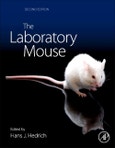The Laboratory Mouse, Second Edition is a comprehensive book written by international experts. With inclusions of the newly revised European standards on laboratory animals, this will be the most current, global authority on the care of mice in laboratory research. This well-illustrated edition offers new and updated chapters including immunology, viruses and parasites, behavior, enrichment and care standards of laboratory mice across the life sciences, medical and veterinary fields.
Please Note: This is an On Demand product, delivery may take up to 11 working days after payment has been received.
Table of Contents
Part 1 History and Genetics1.1 Origin and Phylogenetic Relationship of the Laboratory Mouse
1.2 Historical Foundations
1.3 Strains, Stocks and Mutant Mice
1.4 Mouse Genomics
1.5 Generation of Mouse Mutants by Genotype-driven Mutagenesis
Part 2 Anatomy and Normative Biology
2.1 Early Mouse Development
2.2 Gross Anatomy
2.3 Histology
2.4 Skin and Adnexa of the Laboratory Mouse
2.5 Development and Disease of Mouse Muscular and Skeletal Systems
2.6 The Cardiovasular System
2.7 The Respiratory Tract
2.8 The Gastrointestinal System and Metabolism
2.9 Hematology
2.10 Studying Immunology in Mice
2.11Behaviour
2.12 Biological Rhythm of the Mouse
Part 3 Neoplasms and Infectious Diseases
3.1 Diversity of Spontaneous Neoplasms in commonly used Inbred Strains of Laboratory Mice
3.2 Viral Infections
3.3 Bacterial Infections of the Laboratory Mouse
3.4 Parasitic Infections of the Laboratory Mouse
Part 4 Husbandry and Maintenance
4.1 Housing and Maintenance
4.2 Mouse Enrichment
4.3 Nutrition of the Laboratory Mouse
4.4 Health Management and Monitoring
4.5 Genetic Monitoring
4.6 Gnotobiology and Breeding Techniques
4.7 Cryopreservation of Pre-implantation Embryos and Gametes and associated Methods
Part 5 Procedures
5.1 Handling and Restraint
5.2 Routes of Administration
5.3 Collection of Body Fluids
5.4 Anaesthesia, Analgesia and Euthanasia
5.5 Imaging the Laboratory Mouse in vivo
5.6 Necropsy Methods
Part 6 Legal Regulations
6.1 Laws, Guidelines and Policies governing the Use of Mice in Research








